|
  |
|
Page 8 |
Newsletter 138 Autumn 2022 © Hampshire Mills Group |
|
Derelict Windmills of South Lincolnshire
Keith Andrews
Photos by Keith and Ruth Andrews
|
|
Lincolnshire is well
known for its multi-sailed windmills: Alford with 5
sails, Burgh-le-Marsh with 6 (running clockwise
unlike most other mills), Heckington with 8, Maud
Foster at Boston with 5, and Sibsey Trader with 6.
And there are ‘ordinary’ 4-sailed ones like Moulton.
There are also several
hundred disused and derelict windmills across the
county, so here are a selection from South
Lincolnshire that we saw on our recent visit.
Background information is from Lincolnshire
Windmills, a contemporary survey by Peter Dolman
(1986).
Pinchbeck, Glen
Mill:
This attractive mill,
on the bank of the River Glen outside Pinchbeck, is
dated “R.T. 1812”. At some stage another storey was
added. There were 4 spring sails mounted on stocks
in a poll end, driving 2 pairs of stones. After the
sails were damaged in 1932-3, it continued to mill
using an engine until the late 1970s.
|
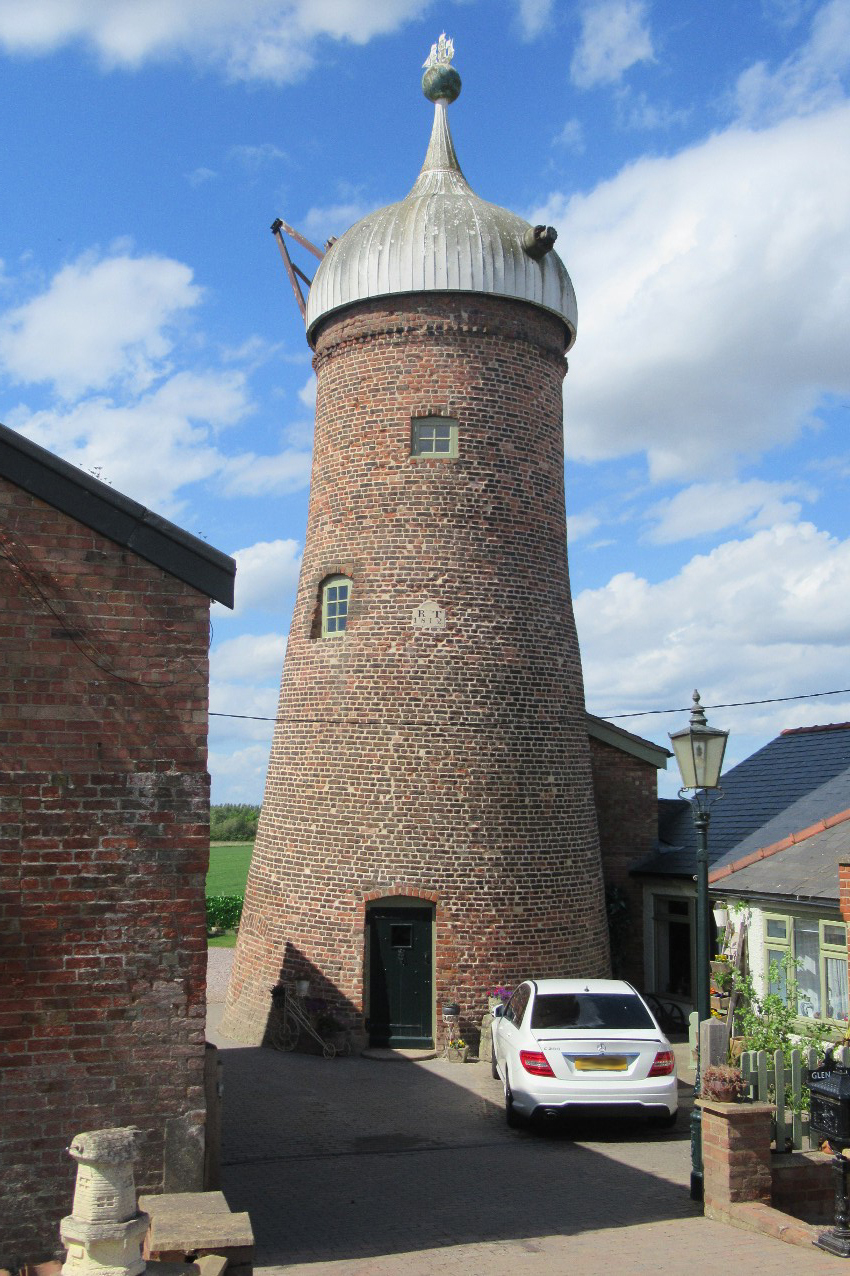 |
|
Sutterton,
Swineshead, Sibsey:
These 3 similar mills
are very typical. They date from the 1820s to
1840s. Sutterton worked until 1921, and the cap
survived until after the war. Swineshead worked
until 1931 when the sails were blown off, but the
cap survived until the 1950s. There was a plan to
restore it, but it doesn’t look like it happened.
Sibsey (not to be confused with Sibsey Trader) also
worked until 1921, the sails being removed in 1924,
and the cap by 1934. At one time it was driven by
“Bywater’s roller reefing sails” which used
longitudinal rollers clothing the whole length of
the sail in one go.
|
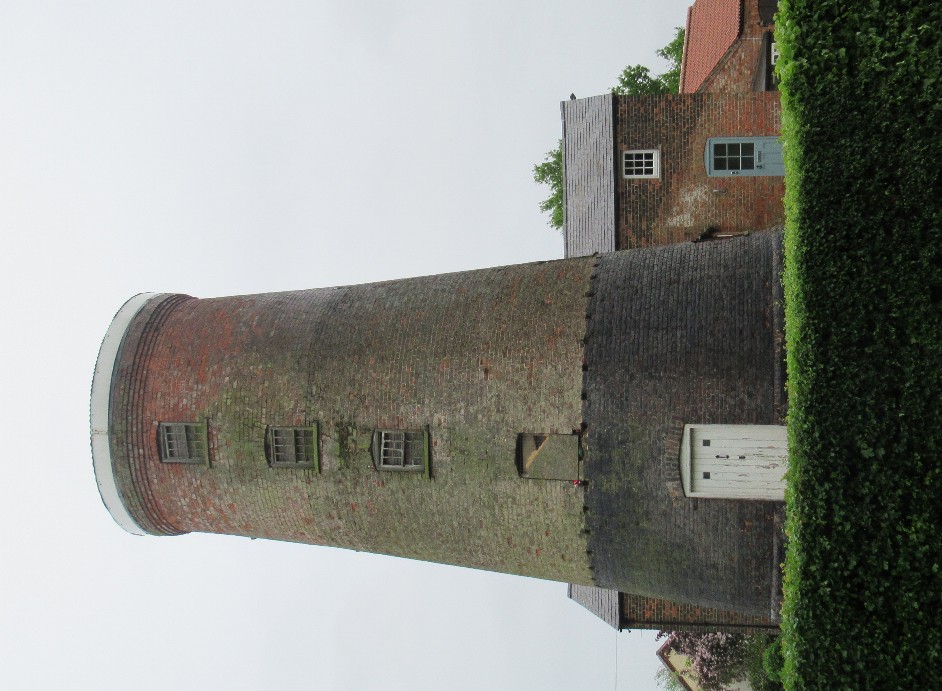 |
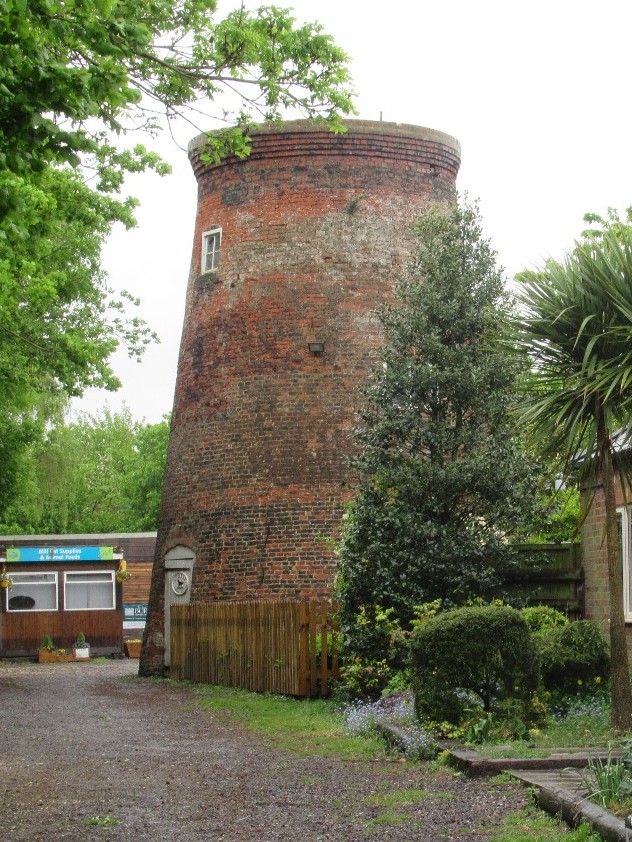 |
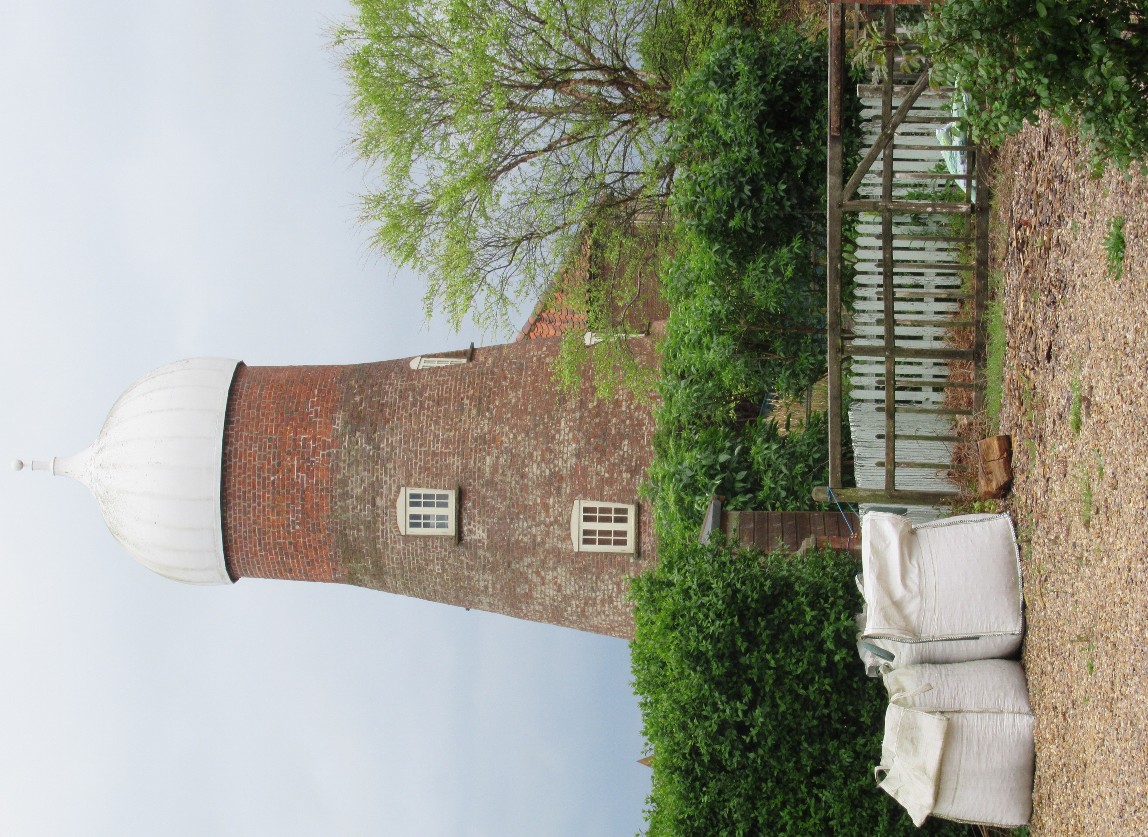 |
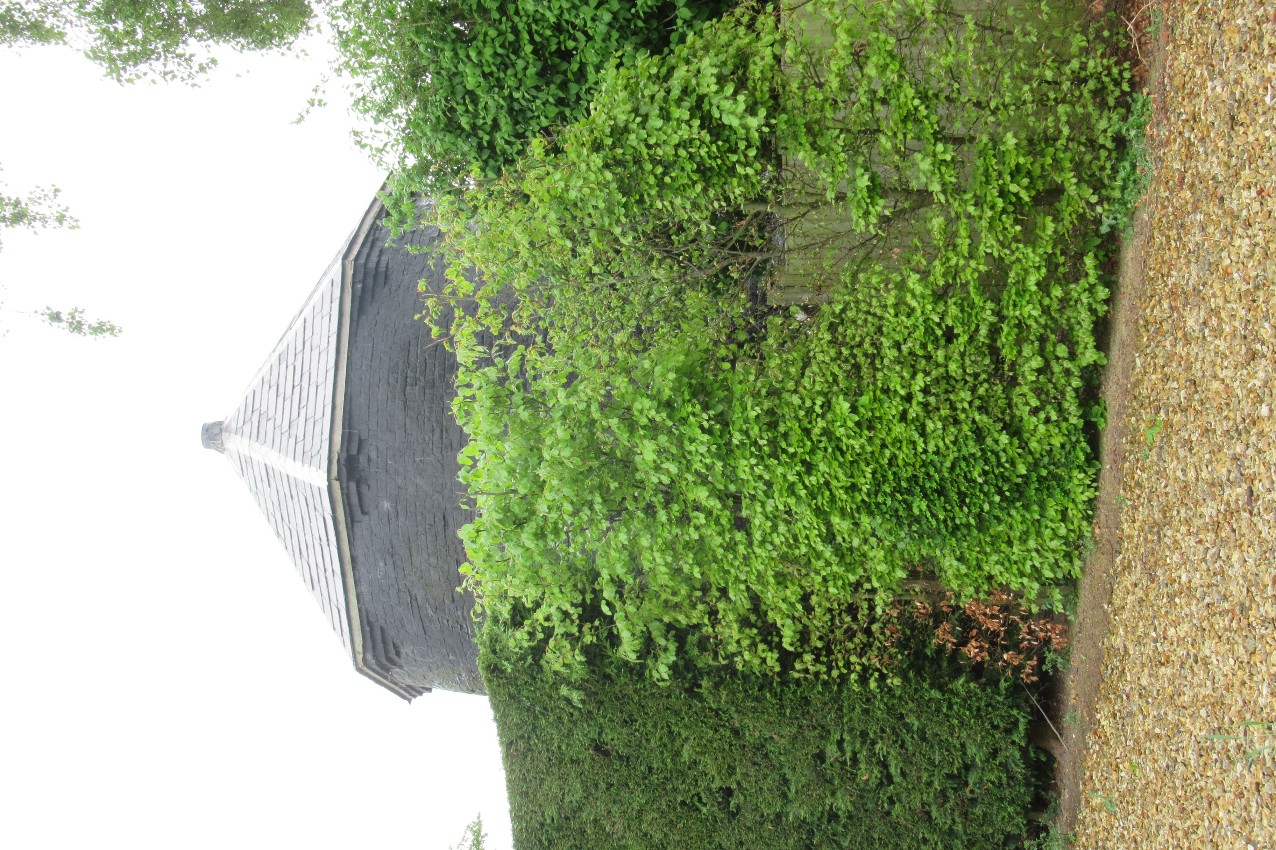 |
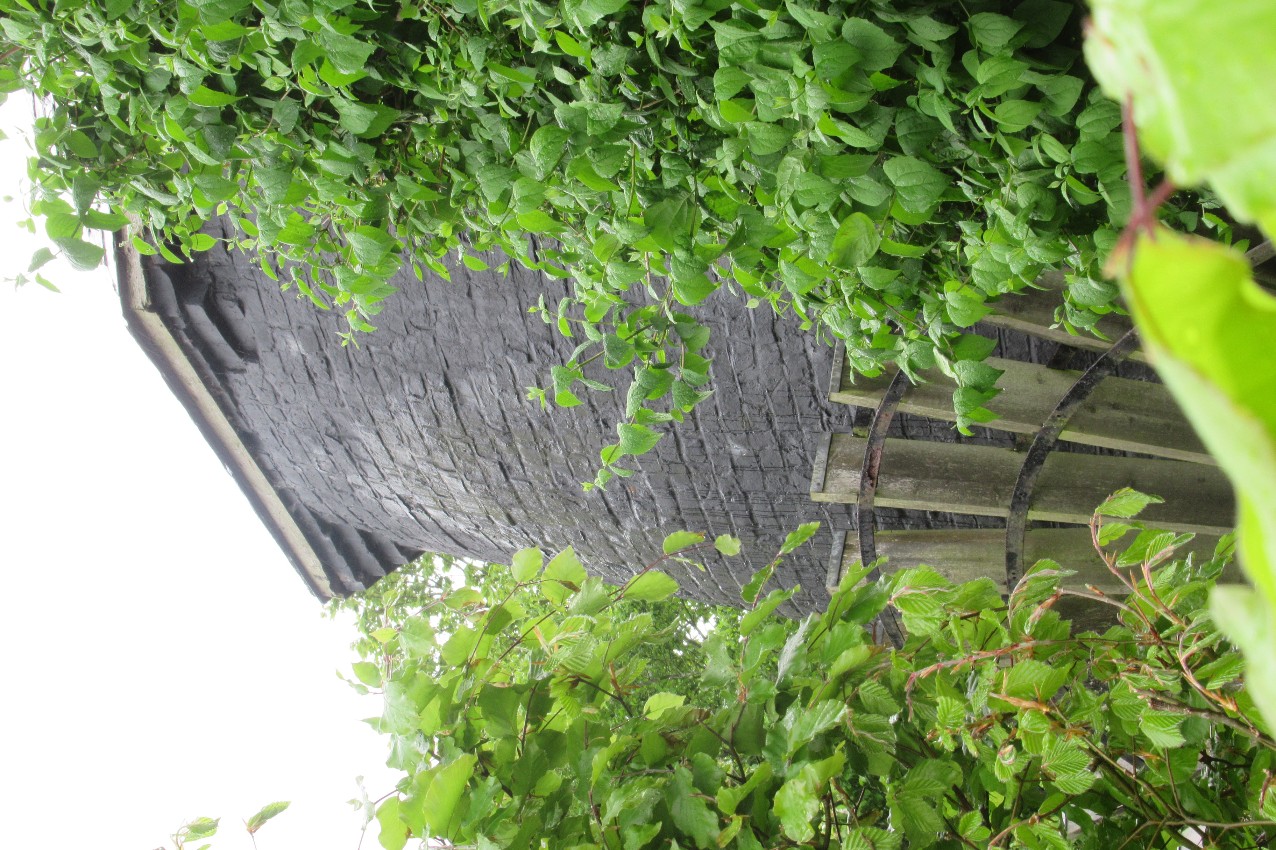 |
Amber Hill:
This was one of several
pumping mills in Holland Fen. Probably dating from
the late 18th century, it was converted to steam
power in the late 19th century, driven by a traction
engine and finally by a tractor until about 1960.
It is now a roofed stump with the rebuilt scoop
wheel alongside. Unfortunately, there is now a very
thick hedge guarding it from prying eyes!

|
|
Gedney Dyke:
It was built for a Mr
Rubbins in 1836 and worked until 1942, subsequently
losing its sails and cap. It was very tall at 68ft
to the curb, with 8 floors and a stage at
second-floor level. The fearsome fencing and
notices suggest that visitors are not very welcome.
Here’s what the notices
say. The last 2 had a picture of a fierce dog!
G
|
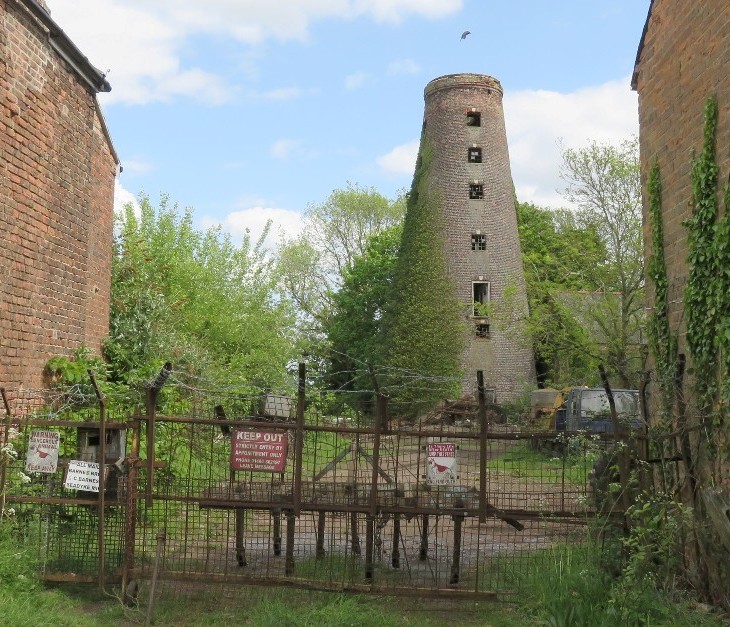
keep out
strictly entry by appointment only
phone
01406
xxx
and leave
message
warning
dangerous animal keep away
is there life after death? Jump this fence and find
out!
|
|
Long Sutton,
Brunswick and Harrison’s Mills:
These 2 ostensibly
similar mills were built in 1817 and 1843
respectively. Heightened from 5 to 6 floors in the
mid-19th century (and hard to tell where the join
is!), Brunswick’s original 4 sails were refitted
with 6 patent sails driving 3 pairs of stones. It
worked until the 1930s and the cap was blown off
around 1963. Harrison’s Mill worked by wind until
the 1920s and then by engine for a time. It had 6
patent sails driving 3 pairs of stones on the first
floor; there is a suggestion that latterly it had 2
more pairs of stones on the ground floor.
|
|
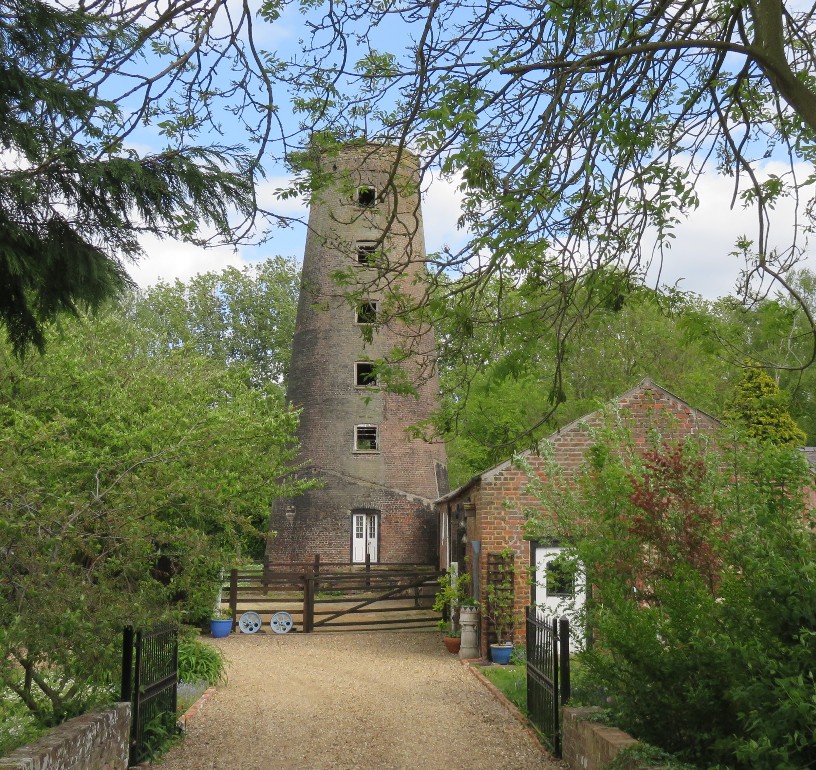
Brunswick |

Harrison's
|
|
Holbeach, Penny Hill:
Dating from 1826 it had
4 patent sails driving 3 pairs of stones. In the
late 19th century it was heightened and then
re-equipped with 6 patent sails and 4 pairs of
stones. It worked until the early 1940s and was
dismantled by 1953. It is surrounded by a very
interesting range of farm and mill buildings, with
the inevitable millstones propped up against the
walls.
|
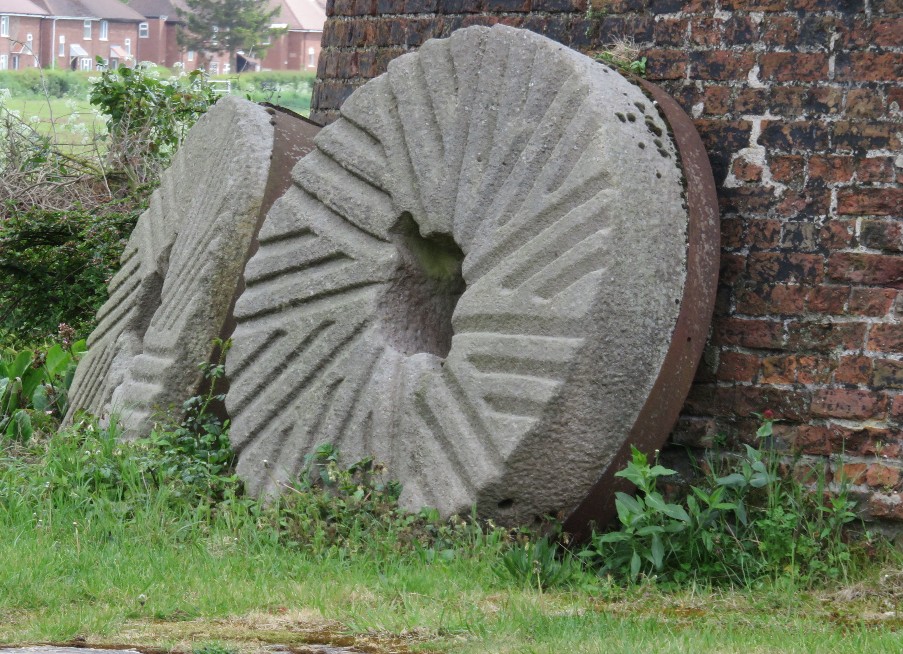 |
|
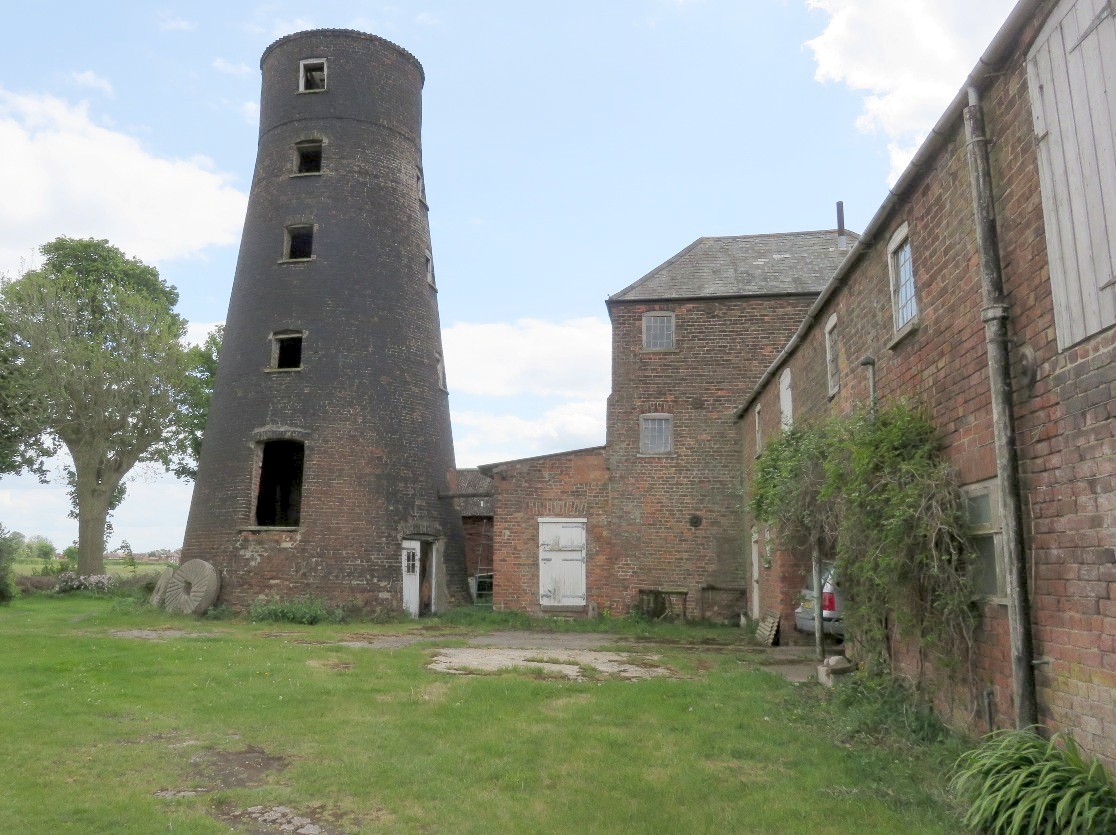
|
As we were
photographing these buildings from the road the
owner appeared and we had an interesting chat. She
said she and her husband had bought the mill complex
after they fell in love with it when driving past
one day, but they had made no attempt to restore the
mill, preferring it as a picturesque ruin (which it
is!). She said a lot of people stopped to admire
it; they often wanted to buy the millstones. |
|
Lutton:
Said to be the oldest
complete tower mill in the county and is dated “T.D.
Aycliff 1779” on a stone above the door. Unlike any
other mill it resembles a brick-built smock mill and
is octagonal in plan. It worked until the early
1930s. The simple cap had triangular gables and a
straight ridge, turned to the wind by a braced
tailpole and winch. As with Swineshead, there was a
plan to restore it, but it doesn’t look like it
happened. |
Bourne Dyke:
The only remaining
smock mill in Lincolnshire was originally a pumping
mill in Deeping Fen, being moved here in about 1845
and changed to corn milling, working until the
mid-1920s. The original cap was boat-shaped and
turned to the wind by a braced tailpole, inherited
from its earlier use. It is now in use as a fine
art shop.
|
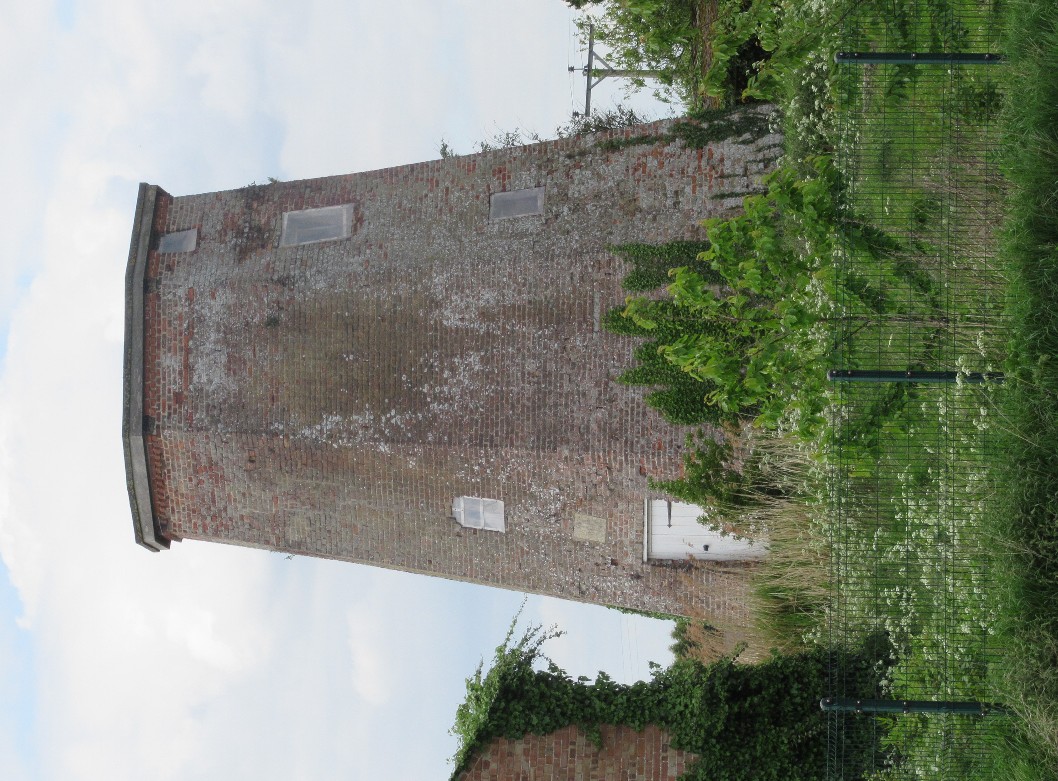 |
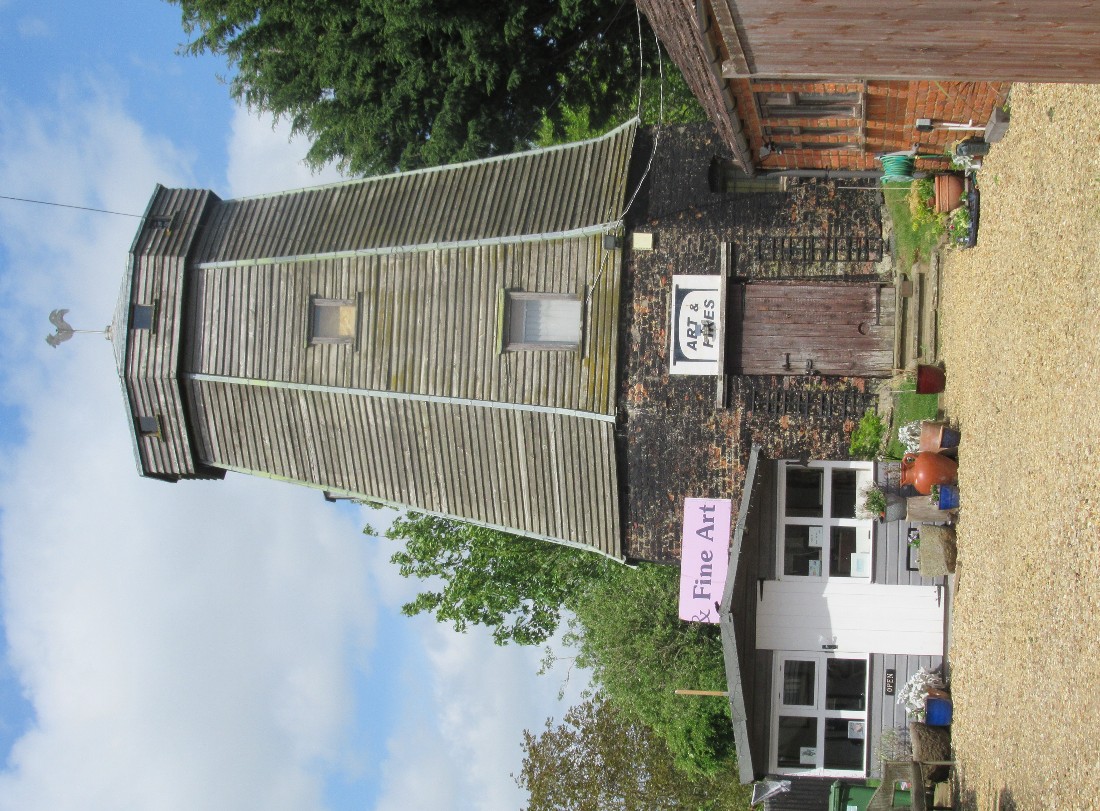 |
|
Finally, a comment
about Sibsey Trader. It is not currently in
operation (but not derelict!) as it is having a
brand new cap constructed as well as replacing the
damaged sails and curb. In the pictures you can see
the new cap, the six armed iron cross to which the
stocks are bolted, and the fantail staging. English
Heritage are carrying out the work, and in mid-July
the cap was completed and lifted back into place.
|
|
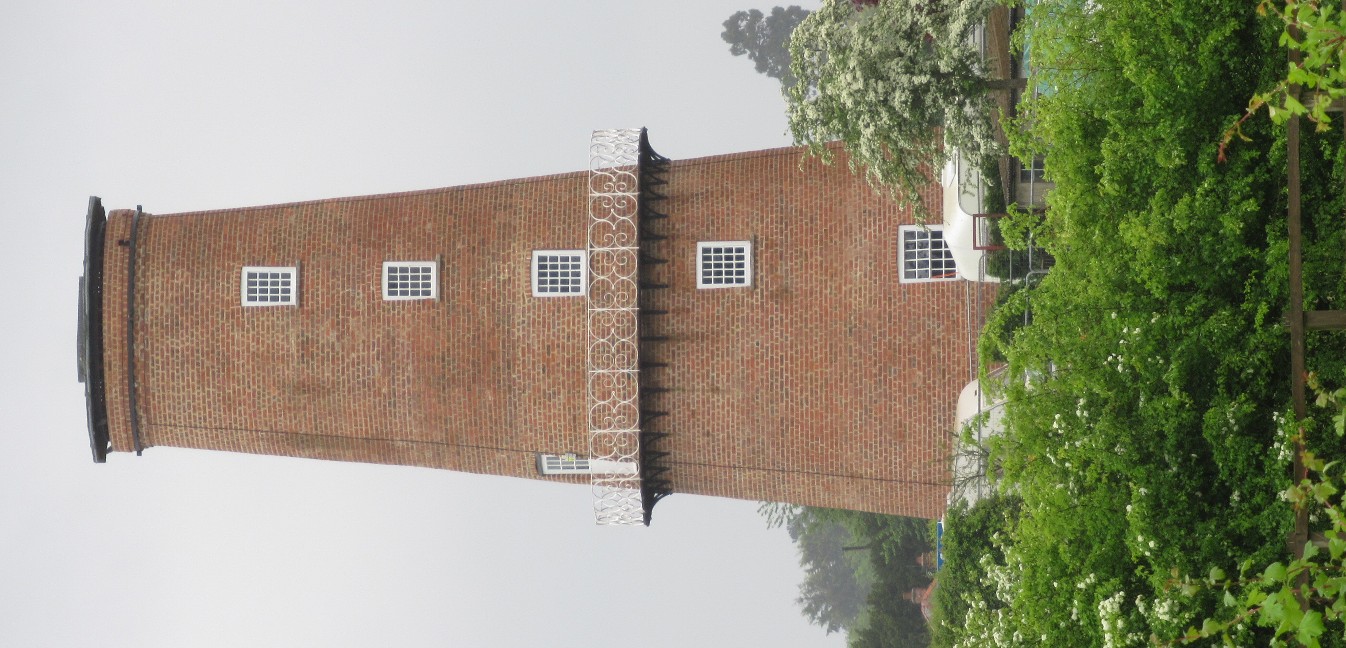 |
 |
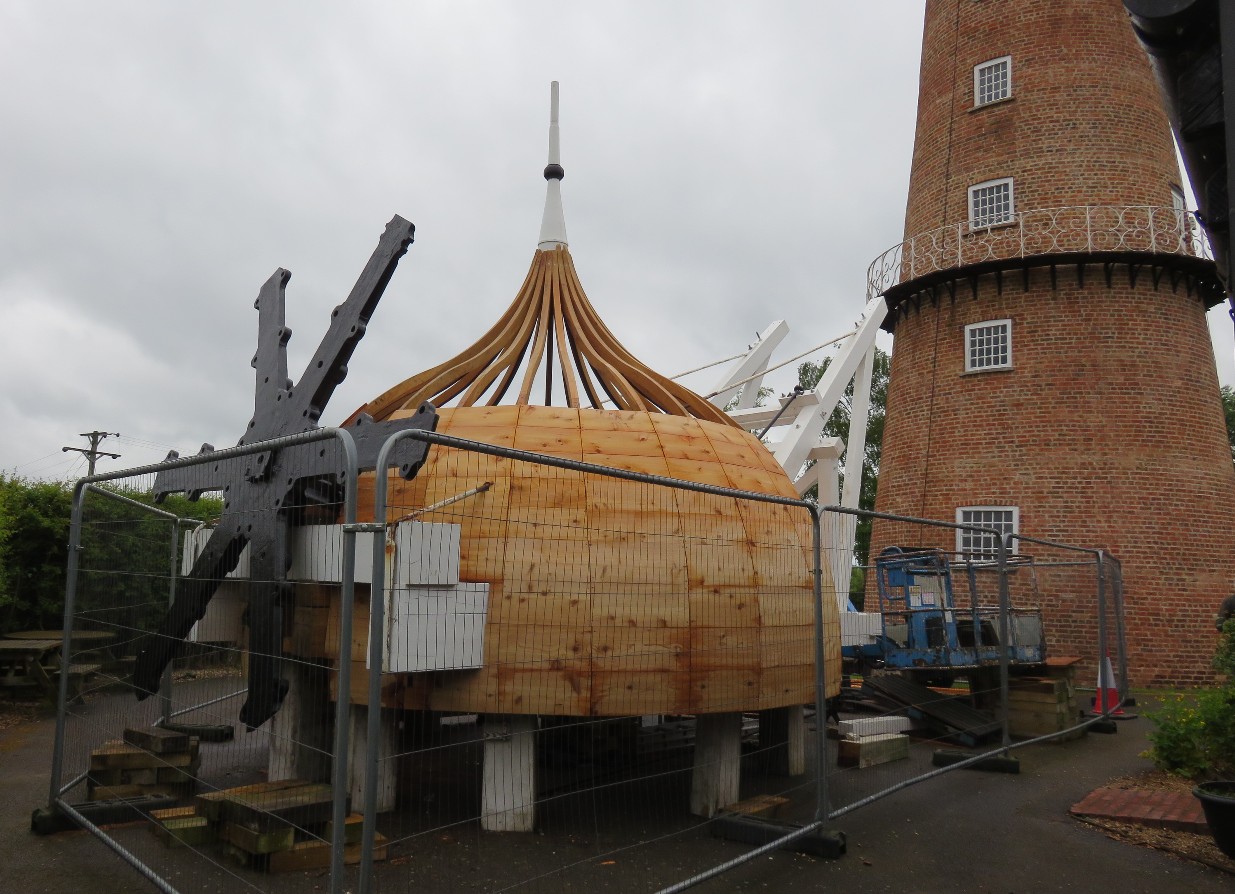 |
|
|
